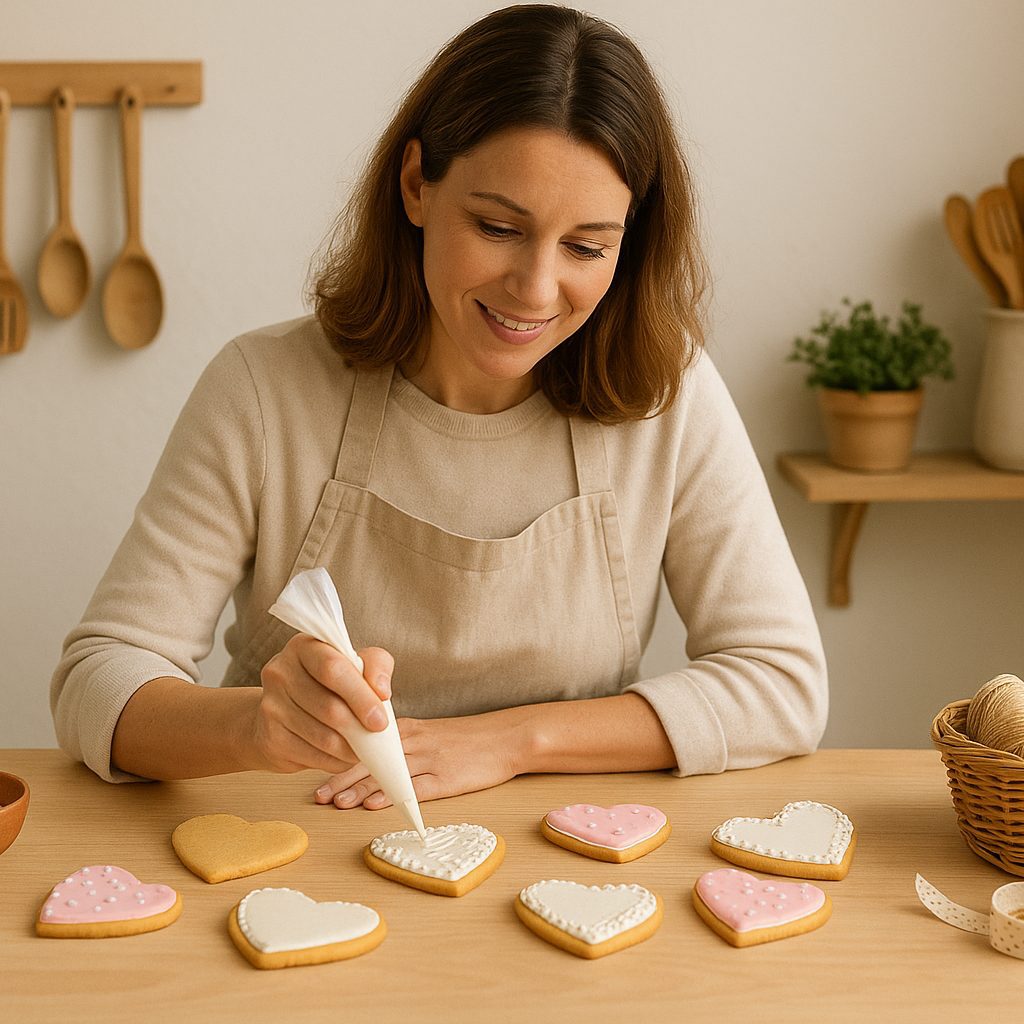Turn Your Craft Hobby Into a Craft Business: Start Crafting!
Turn Your Craft Hobby Into a Craft Business: Start Crafting! Learn how to start a craft business, turning your craft hobby into a profitable venture!

How to Turn Your Craft Hobby into a Craft Business: Start Crafting Today!
I started out as a weekend cook, bottling my signature smoky BBQ spice rub for friends. One Saturday my neighbor said, “You should start selling this at the farmers market.” That nudge became the first step in my business journey from kitchen experiment to profitable craft business. In this guide I’ll share every lesson—successes, mistakes, and the “aha!” moments—so you can turn your own craft hobby into a thriving handmade business without draining your pocket.
- 🍋 Tip: Keep a tiny notebook near the stove. Jot flavor tweaks and customer comments—you’ll be amazed how much feedback fuels growth and creativity.

What Do You Need to Start a Craft Business?
Every hobby turned venture has unique craft business needs, so jot down a checklist of everything you need to start—from cottage-food permits to logo files—before you spend a single dollar on packaging.
What are the Basic Requirements for a Craft Business?
Your top requirement is a product with clear value. List every ingredient—physical and intangible—that makes your sauce, cookie, or décor item special. Then check local regulation for cottage food or small-batch production. Most states allow “low-risk” foods (jams, spice mixes, granola) sold direct to consumers as long as you label allergens and provide safe storage instructions.
🔥 Chef’s Tip: Use a spreadsheet to track expense per batch. Knowing cost per jar shows whether you’ll actually earn a profit.
How Much Initial Investment Does It Require?
Many owners launch with a one-time investment under $1,000—labels, insurance, and a food-safe mixer. Keep it lean by renting a shared kitchen and buying bulk spices only after confirming market demand.
| Cost Category | Typical Range | Ways to Save |
|---|---|---|
| Cottage Food Permit | $50–200 | Combine paperwork with a friend |
| Starter Packaging | $150–300 | Order blank jars, add custom stickers |
| Website & account fees | $0–200 | Use free “link-in-bio” sites |
| Craft fairs booth | $75–150 | Split a table the first year |
What Legal Regulations Should I Be Aware Of?
Beyond food codes, register a business name, get sales-tax ID, and draft a simple liability waiver. These steps establish credibility and protect personal assets if you ever face a recall. It’s crucial to separate your craft-income bank account from household funds—clean bookkeeping impresses wholesale buyers.
How Can You Successfully Start a Craft Business?
What is the First Step to Starting?
Define a tight category—say, vegan hot sauces—so you can serve a specific target audience. That focus becomes your strength when bigger brands look generic.
How to Choose the Perfect Business Name?
Brainstorm verbs and adjectives that spark inspiration. I used free name generators, asked Instagram followers for votes, and finally picked “Firefly Pantry.” When you hear someone smile as they say it, you’ve nailed the choice.
How to Manage Your Time and Resources Effectively?
Batch-cook on Sundays, print labels while sauces simmer, and schedule social posts with a free platform like Buffer. Tight routines let you manage production around day-job hours.
- 📦 Pro Tip: Set reorder points in inventory software so you never run out mid-market.
How to Market Your Craft Business?
What Are Some Strategies to Increase Your Market Appeal?
Tell the story behind each recipe: maybe Granny’s peach chutney or a road-trip taco dish that inspired your rub. Story sells. Offer a download for free recipe card with every purchase to boost appeal and repeat sales.
How to Use Instagram to Grow Your Audience?
Post quick reels of you adding fiery spice or a sped-up jar-stamping session—people love seeing process. Pin a link in your bio to an email signup so fans never miss a restock.
How Can Craft Fairs Boost Your Visibility?
Local shows let shoppers taste, receive feedback, and snap selfies. A positive experience turns browsers into word-of-mouth marketers. Bring a clipboard to collect emails—your future VIP list.
- 🎙️ Podcast Tip: Pitch your origin story to foodie shows; three interviews landed me wholesale leads in other states.

How to Expand and Scale Your Craft Business?
How to Expand Without Overstretching?
Start by wholesaling to one coffee shop, then expand region-by-region. Scaling is easier when you keep recipes consistent and production in a licensed facility.
What Are the Benefits of Exploring Collaboration?
A pastry chef might drizzle your chile honey on cronuts—cross-posting exposes both brands. Strategic collaboration adds flavor to marketing without extra ad spend.
How to Use Online Platforms Like Amazon to Reach New Customers?
Listing on Amazon Handmade increases trust and overnight shipping. Match e-retail fees against margins so the additional cost doesn’t erode profit.
What Challenges Might You Face in Your Craft Business Journey?
How to Overcome Trial and Error?
Batch testing is pure trial and error. Keep notes, run mini focus groups, and pivot. Remember, you can’t fix what you don’t measure.
What Are Common Additional Costs to Expect?
Expect barcodes, shipping supplies, and summer ice packs. Planning for additional cost cushions cash flow.
How to Maintain Positive Customer Feedback?
Respond fast, replace broken jars, and surprise loyal buyers with bonus samples. People rarely forget stellar service.
- 🛠️ Strategic Tip: Build a simple “How we deliver” FAQ so buyers know your process and shipping times.
Key Takeaways
-
A food-centric craft business starts with one standout recipe and tight market focus.
-
Minimal gear gets you cooking; keep early spending low to stay profitable.
-
Storytelling, Instagram, and craft fairs grow community and let you share your passion.
-
Wholesale, Amazon, and smart collaboration fuel growth—scale only when systems are ready.
-
Excellent packaging, fast replies, and continuous feedback keep brand love simmering.
FAQ
How do I price jars to ensure profit?
Add raw ingredient cost + labor + 30 % overhead, then double.
Do I need insurance for a food crafty venture?
Yes. Cottage-food policies cost about $300 yearly.
Can I sell nationwide right away?
Check each state’s cottage-food regulation; some restrict interstate trading.
What if my sauce separates in transit?
Improve emulsion or instruct buyers to shake—maintenance builds trust.
How do I drive traffic during off-season?
Offer gift bundles and a cooking mini-course via your blog.
Is blogging still worth it?
Absolutely; a blogger tutorial can rank on Google and send warm leads.
Should I file as an LLC?
It depends on risk tolerance—an LLC shields personal assets in case of recall.
Any tips for the first year?
Track every cent; small leaks sink ships faster than big storms.
How can I get feedback before launch?
Host a backyard tasting; invite five people who will be brutally honest.
Is food-safe labeling expensive?
A quality printer saves money long-term; outsourced labels raise expense.
Can I run a business without social media?
Yes, but you’ll grow slower. Even a basic account keeps you discoverable.
“Every jar is a story, and stories cook connection.” —Chef-Mentor Luis
Your stovetop dreams can translate into a real venture. Gather that family chutney, tighten costs, and step boldly into the craft arena. The kitchen is calling—answer it with jars, labels, and unstoppable creativity!





